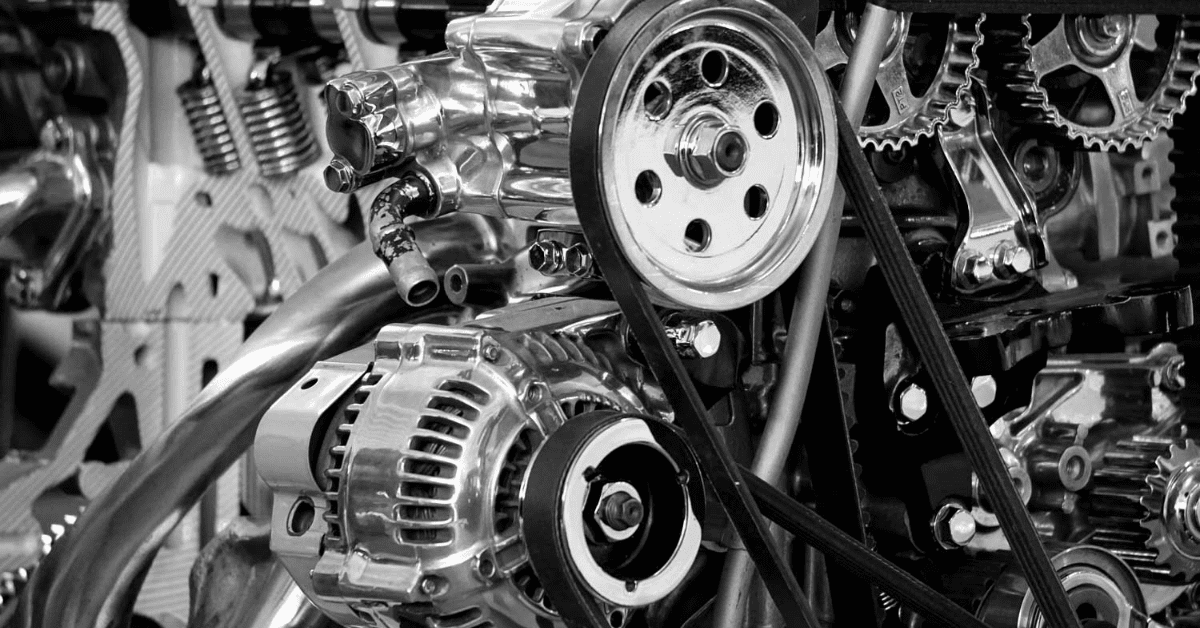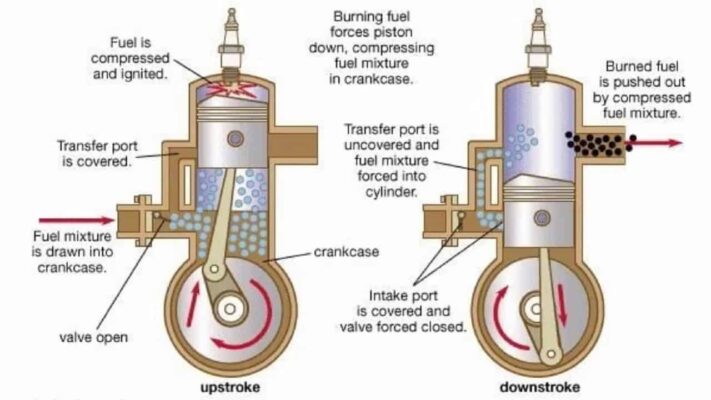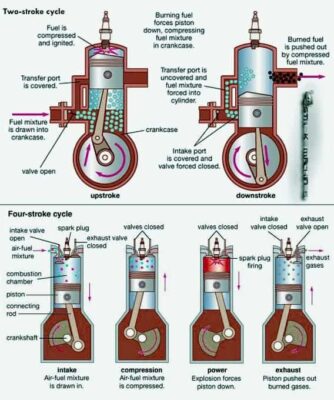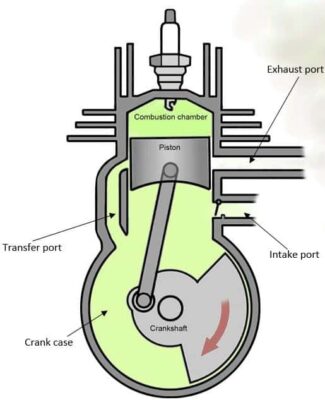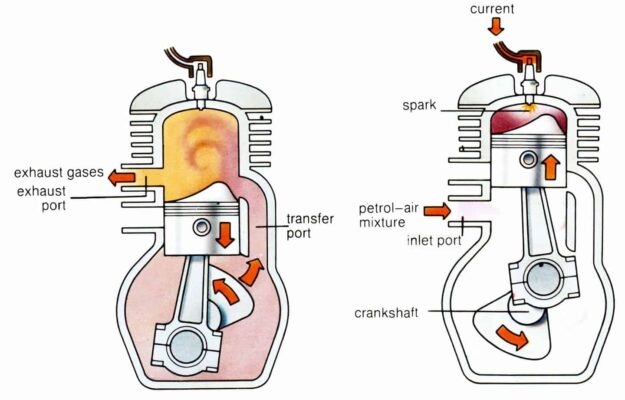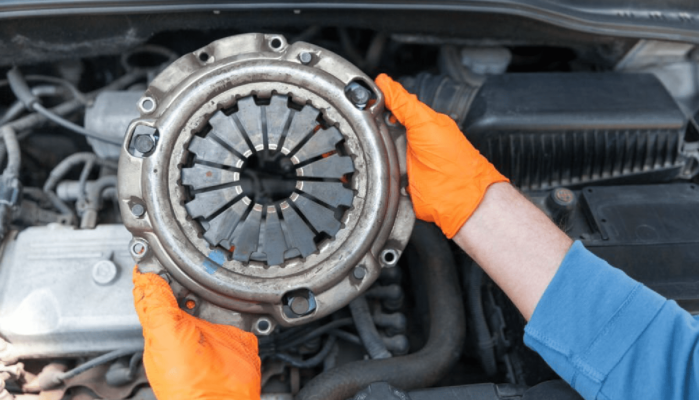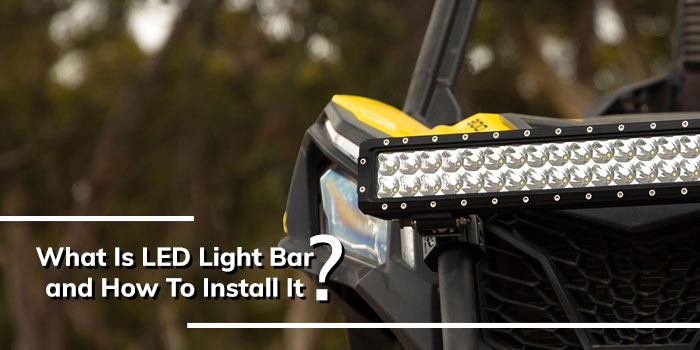The engine is the most complex component and the heart of a car. Its purpose is to convert heat from burning petrol or diesel into power that moves the wheels and propels the vehicle into motion.
The engine contains a spark plug which is responsible for igniting the air fuel mixture inside the cylinder and setting the chain reaction into motion. Hence, we get the name internal combustion engine. (In the case of diesel engines, a spark plug is absent, instead it contains a fuel injection nozzle that sprays diesel into the combustion chamber which ignites due to the high temperatures caused by compressing the fuel).
The Piston in the Cylinder Undergoes 4 Distinct Stages (Known as Strokes) Namely:
- Intake of the air fuel mixture
- Compression
- Power stroke
- Exhaust of the burnt gases
Depending on how these strokes are managed in the engine, we can classify the engine as four stroke or two stroke.
How Can We Differentiate Between 2-stroke and 4-stroke Engines?
As technology and innovation have improved with internal combustion engines, what has remained is two distinct types of engines, i.e., the 2-stroke and the 4-stroke engine.
You may be asking what exactly is the difference between a 2-stroke and a 4-stroke engine? Read on to learn the major differences between the two types of engines.
The major distinction between a 2-stroke and a 4-stroke engine is that in a 4-stroke engine, the crankshaft undergoes 2 complete revolutions consisting of 4 strokes to complete one power stroke, whereas the 2-stroke engine goes through 1 complete revolution of the crankshaft consisting of 2 strokes to complete one power stroke.
A stroke is defined as the piston moving from its top most position to the bottom most position within the cylinder. When the piston moves down, it intakes the fuel air mixture, and when it moves up, it expels the exhaust gases.
Let’s Break Down Each Stroke in the Combustion Cycle:
Intake stroke – the piston moves from top dead centre to bottom dead centre while allowing the fuel air mixture into the combustion chamber.
Compression stroke – the piston moves from bottom dead centre to top dead centre, the intake valve closes and the air fuel mixture is compressed in the combustion chamber
Power stroke – The spark plug ignites the air fuel mixture and an explosion is caused forcing the piston to move down
Exhaust – the piston moves from bottom dead centre to top dead centre with the exhaust valve open to allow the burnt gases to escape into the exhaust manifold.
Four Stroke Engines:
4 stroke engines are the most common type of engine and power everything from cars, to generators. These types of engines have valves for the intake and exhaust processes of the air fuel mixture.
Most engines today are 4-stroke engines because they are efficient, produce less pollution and keep the oil and fuel separated so that you don’t have to premix petrol and oil while refuelling.
4- stroke engines have a good balance of power, reliability and provide good fuel efficiency. Almost all passenger cars and trucks today have 4-stroke engines either petrol or diesel.
Two Stroke Engines:
2-stroke engines are less common and do not power passenger cars and trucks. They are more suited to applications where a high power to weight ratio is required, like small capacity motorcycles, chainsaws and lawn mowers.
In 2 stroke engines, there are no valves present for the intake and exhaust strokes. Instead, they make use of inlet ports and exhaust ports that are uncovered by the moving piston.
These kinds of engines need oil to be mixed in with the petrol for lubrication of the piston as it moves.
Comparing a 2 Stroke and 4 Stroke Engine
|
Four Stroke Engine
|
Two Stroke Engine
|
|
One power stroke for two revolutions of the crankshaft
|
One power stroke for one revolution of the crankshaft
|
|
Requires a heavy flywheel because of the unbalanced nature of the moving piston that has power strokes alternately
|
This engine utilises a lighter flywheel because of the even power strokes for each revolution of the crankshaft
|
|
The engine construction is heavy in weight
|
Engines are made lighter and have fewer moving components
|
|
Contains valves which makes them complex components that require timing belts or chains
|
Makes use of ports that are not very complex and contains no valves
|
|
Cost of the engine is higher
|
Is less expensive
|
|
Due to friction of many moving parts, mechanical efficiency is lower
|
Has fewer moving parts, therefore the mechanical efficiency is higher
|
|
Fuel efficiency is higher because the intake and exhaust strokes are not together
|
Fuel efficiency is low because intake and exhaust strokes are together
|
|
The engine runs cooler compared to two stroke engines
|
Engine temperature is more compared to four stroke engines
|
|
Engines can be of water cooled or air-cooled type
|
Usually it is an air-cooled engine. Water cooled two stroke engines are rare
|
|
Less fuel consumption and air fuel mixture are completely burnt
|
Fuel consumption is higher because some of the unburnt fuel escapes in the exhaust
|
|
Engines are larger and require more space
|
The engine is more compact and requires less space
|
|
Lubrication system is complex and requires more components
|
Lubrication system is simple and needs no extra components
|
|
Engines are quiet and smoother in operation
|
Engines are loud and have more vibrations
|
|
The engine has inlet valves and exhaust valves that require a camshaft to open and close
|
The engine has inlet and exhaust ports without the need of camshafts, the piston opens and closes the ports
|
|
Consumption of lubricating oil is low
|
Consumption of lubricating oil is high
|
|
Moving parts have less wear and tear
|
Wear and tear of moving parts is more
|
|
These engines are found in passenger cars and trucks
|
Mostly found on mopeds, small motorcycles and scooters
|
2 Stroke Engine Lubrication System
The lubrication system of an engine is used to provide cool, filtered oil to all the moving parts in the engine in order to reduce friction and temperature.
In 2 stroke engines, a mist lubrication system is used. This is because crankcase lubrication cannot be used. The lower part of the crankcase in 2 stroke engines is used to compress the air fuel mixture. Therefore, it is not possible to have lubricating oil in the sump.
Mist lubrication is used in which oil is premixed with the petrol while refuelling in the ratio of approximately 5%. The petrol and oil are administered through the carburettor.
Conclusion
Internal combustion engines come in two types; 2-stroke and 4-stroke. Although each engine type has its advantages, modern day passenger cars and trucks make use of 4-stroke engines because they are more fuel efficient, less noisy and produce fewer emissions.
2-stroke engines are commonly found in lightweight applications like motorcycles of small capacity, scooters, mopeds, chainsaws and lawn mowers.
The lubrication system in 4-stroke engines uses less amount of oil than 2-stroke engines. Also, in 2-stroke engines, the lubrication system is provided by mixing in oil with the petrol during refuelling which adds to its high emissions.
Frequently Asked Questions
Q1. Are 2 stroke engines more powerful?
Ans. In 2 stroke engines, combustion takes place with each revolution of the crankshaft, so at any given rpm, it produces double the power of a similarly sized 4 stroke engine.
2 stroke engines also have more instantaneous power delivery, and have a better power-to-weight ratio. They are mostly found in lightweight motorcycles that give the vehicle excellent acceleration characteristics and good fuel efficiency.
Q2. Why are 2 stroke engines banned?
Ans. Due to the high emissions of 2 stroke engines, they do not conform to pollution norms in many countries. 2 stroke engines premix oil in the fuel, and the burning of this oil in the combustion chamber leads to extra fumes. Also, a lot of unburnt fuel exits the exhaust system which leads to more pollution.
Q3. Why are 2 stroke engines not used commonly?
Ans. 2-stroke engines cause more pollution than 4-stroke engines. Since the intake and exhaust stroke happen together, a lot of unburnt gases exit through the exhaust port. This causes 2-stroke engines to consume more fuel than 4-stroke engines.
2-stroke engines make use of a petrol oil premix while refuelling, which is complicated and requires extra effort from the end user. 4-strokes have a separate lubrication system which needs to be refilled separately.
2-stroke engines are also a lot noisier than 4-stroke engines of the same capacity.
Q4. Which engine is better, 2 stroke or 4 stroke?
Ans. Most modern passenger cars and trucks make use of 4-stroke engines. They are more fuel efficient, produce less emissions and are smoother to use.
2-stroke engines run at higher rpms and tend to wear out faster than 4-stroke engines. A 4-stroke engine is more durable and is generally going to last longer than a 2-stroke.
On the other hand, a 2-stroke engine is more powerful than a 4-stroke engine and has a higher power-to-weight ratio. 2-stroke engines have a simpler design as well, because they don’t make use of valves and camshafts, rather they use ports.
Q5. What cars have 2 stroke engines
Ans. Some notable cars that have used 2-stroke engines in the past are Saab, Suzuki, Subaru, Trabant and Llyod. Modern cars do not make use of 2 stroke engines. They cause too much pollution, are noisy and are not fuel efficient. They also have a much shorter lifespan than 4-stroke engines.
2-stroke engines in cars also consume too much oil, which turns out to be expensive. These types of engines are now preferred for use in lightweight motorcycles, scooters, mopeds, chainsaws and lawn mowers.
In many countries, 2-stroke engines have been outlawed due to their emissions not being up to standards.
Q6. What are the 4 stroke engine cycle steps?
Ans. The steps involved in a 4-stroke engine are
Intake – the air fuel mixture enters the combustion chamber through the intake valve as the piston moves from top dead centre to bottom dead centre
Compression – The air fuel mixture is compressed as the piston moves from bottom dead centre to top dead centre and both the intake and exhaust valves are closed.
Power – At this point, the spark plug ignites the air fuel mixture. The combustion forces the piston down
Exhaust – As the piston moves up again, the exhaust valve is opened which allows the burnt gases to move into the exhaust manifold.
Q7. How many valves in 4 stroke engines?
Ans. A 4-stroke engine has a minimum of 2 valves. One intake valve and one exhaust valve. The intake valve is used to allow the air fuel mixture to enter the combustion chamber in the cylinder. The exhaust valve allows the burnt gases to exit the combustion chamber and into the exhaust manifold.
Valve movement is controlled by a camshaft. A camshaft is a pear-shaped lobe that opens and closes the valve depending on its position. The camshaft is rotated by the timing belt which is attached to the crankshaft. Together they work to open and close the valves as needed for the combustion process to work.
Q8. What are the 4 stroke engine components?
Ans. The main components of a 4-stroke engine are:
Piston – moves up and down within the cylinder
Cylinder – where the combustion takes place
Crankshaft – converts the motion of the piston into a rotational force
Connecting rods – the crankshaft is connected to the piston via the connecting rod
Fuel injectors – spray fuel into the combustion chamber (a carburettor is absent in this case)
Camshaft – has pear shaped lobes that are used to open and close valves
Spark plug – creates a spark that ignites the gases in the combustion chamber
Valves – allow the air fuel mixture to enter the cylinder and the burnt gases to exit the combustion chamber
Carburettor – mixes the air and fuel in the correct ratio
Flywheel – makes the movement of the crankshaft smooth and evens out the pulses
